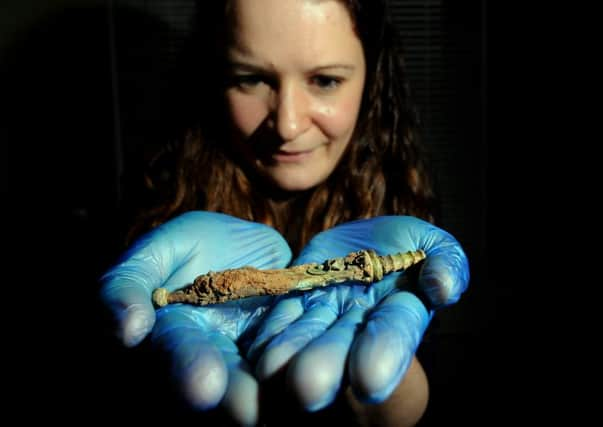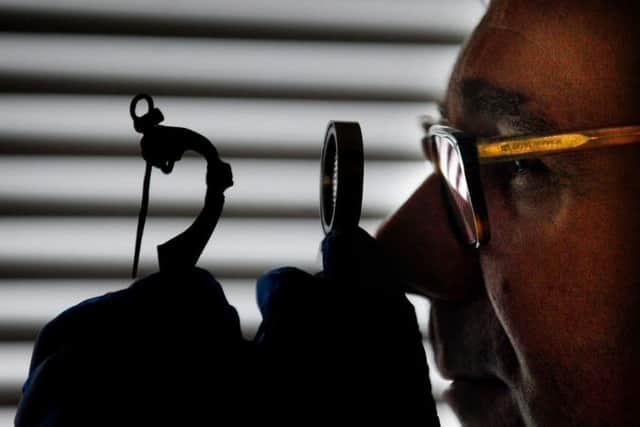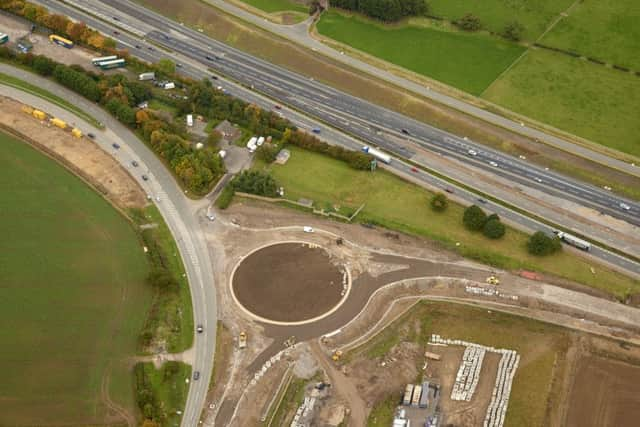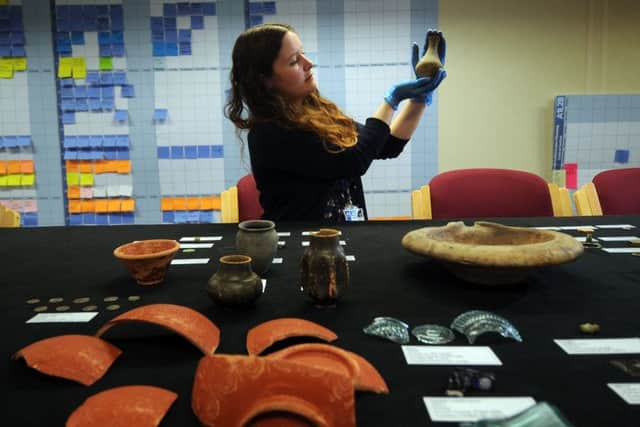'˜Spectacular' discoveries could put Romans in Yorkshire a decade before they settled in York


Over the last two years, around 60 archaeologists have been working along the path of Dere Street, the old Roman route known as the Great North Road, which ran adjacent to the path of the current A1.
A 12-mile stretch of the A1 between Leeming Bar and Barton is undergoing a £380m upgrade to install an extra lane - and the discoveries made have shown that the route was just as important almost 2,000 years ago as it is today.
Advertisement
Hide AdAdvertisement
Hide AdMore than 177,000 artefacts have been unearthed, including a rare Roman brooch from Eastern Europe and a decorative miniature sword. But the most significant discoveries go beyond the smaller treasures.


Dr Steve Sherlock, who has led the archeological project, said that although they expected to find Roman deposits, the “quality, quantity and extent went beyond expectations”.
One of the most significant finds were the remnants of a town close to Scotch Corner, that was previously unheard of, and is potentially the earliest Roman settlement in Yorkshire, believed to date back to 60AD - a decade before the Romans came to York.
“We’re effectively re-writing the history books, because we didn’t know it was there, or that there was anything so early,” he said. “Conventional wisdom tells us that in 71 AD the Romans came over the Humber and settled in places like York and near Boroughbridge - but this site is even earlier.”
Advertisement
Hide AdAdvertisement
Hide AdThere, traces of timber buildings, including pottery, glass vessels, beads and even the remnants of crops were found just before Christmas.


“It was quite spectacular,” Dr Sherlock said.
Close by, at Catterick, which was occupied by the Romans around 80AD, further discoveries were made.
“We didn’t just find one building, but a sequence of buildings going back hundreds of years, that nobody knew existed,” Dr Sherlock said. “We can understand the impact of the site because of the amount of time it was occupied - over 300 years.”
Much knowledge has been gained about Bainesse, a Roman town south of Catterick where a cemetery included 246 burials, dating back to the first and third century AD, was excavated.


Advertisement
Hide AdAdvertisement
Hide AdSome were buried with pots, Whitby jet, beads, jewellery, and even hob nail boots.
The bones will now be analysed to determine their age, sex, and cause of death, which could reveal anything from what the Romans in Yorkshire ate to popular diseases, before being re-buried.
The Roman cicada brooch was made in Pannonia – a region that today includes parts of Hungary, Austria, Slovenia, Croatia and Serbia – and is the first found in the UK. It provides evidence of a mutli-national population or long-distance trade with Catterick.
The team will leave the site later this month but will continue to study and verify the findings, some of which will go to the York Museum Trust.


Advertisement
Hide AdAdvertisement
Hide AdDr Hannah Russ, from Northern Archaeological Associates, said: “The quality and preservation of the artefacts and environmental remains from this scheme is outstanding.”
The scheme to widen part of the A1 between Leeming Bar and Barton remains on course despite the huge archeological discoveries.
Work began on the upgrade in March 2014, and it will be complete by spring next year.
Highways England Project Manager, Tom Howard, said: “It is fascinating to discover that nearly 2,000 years ago the Romans were utilising the A1 route as a major road of strategic importance and using the very latest technological innovations from that period.
“We are doing the same thing today – using the latest technology to improve this important route and significantly reduce journey times.”
More than 450 people have worked on the project.